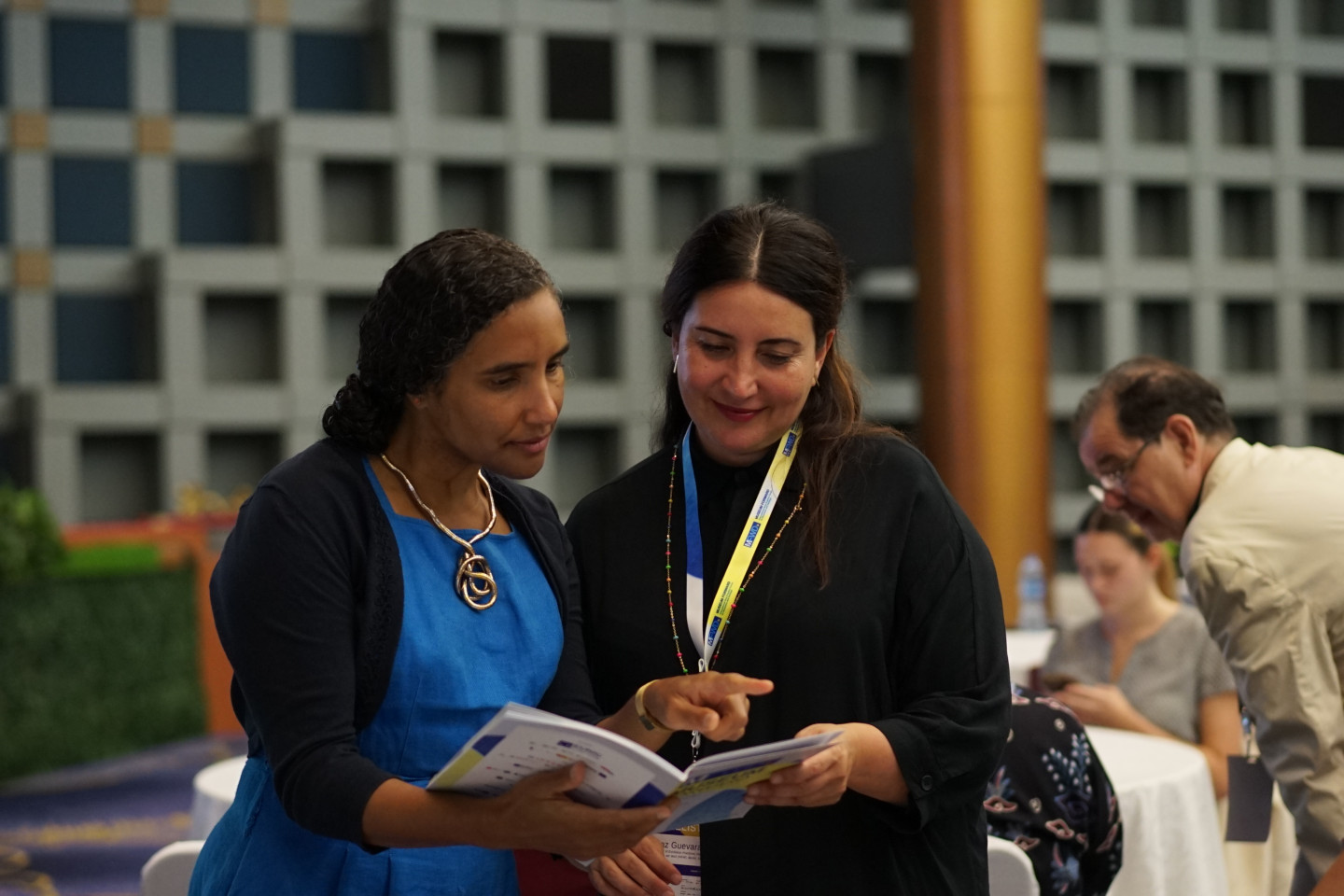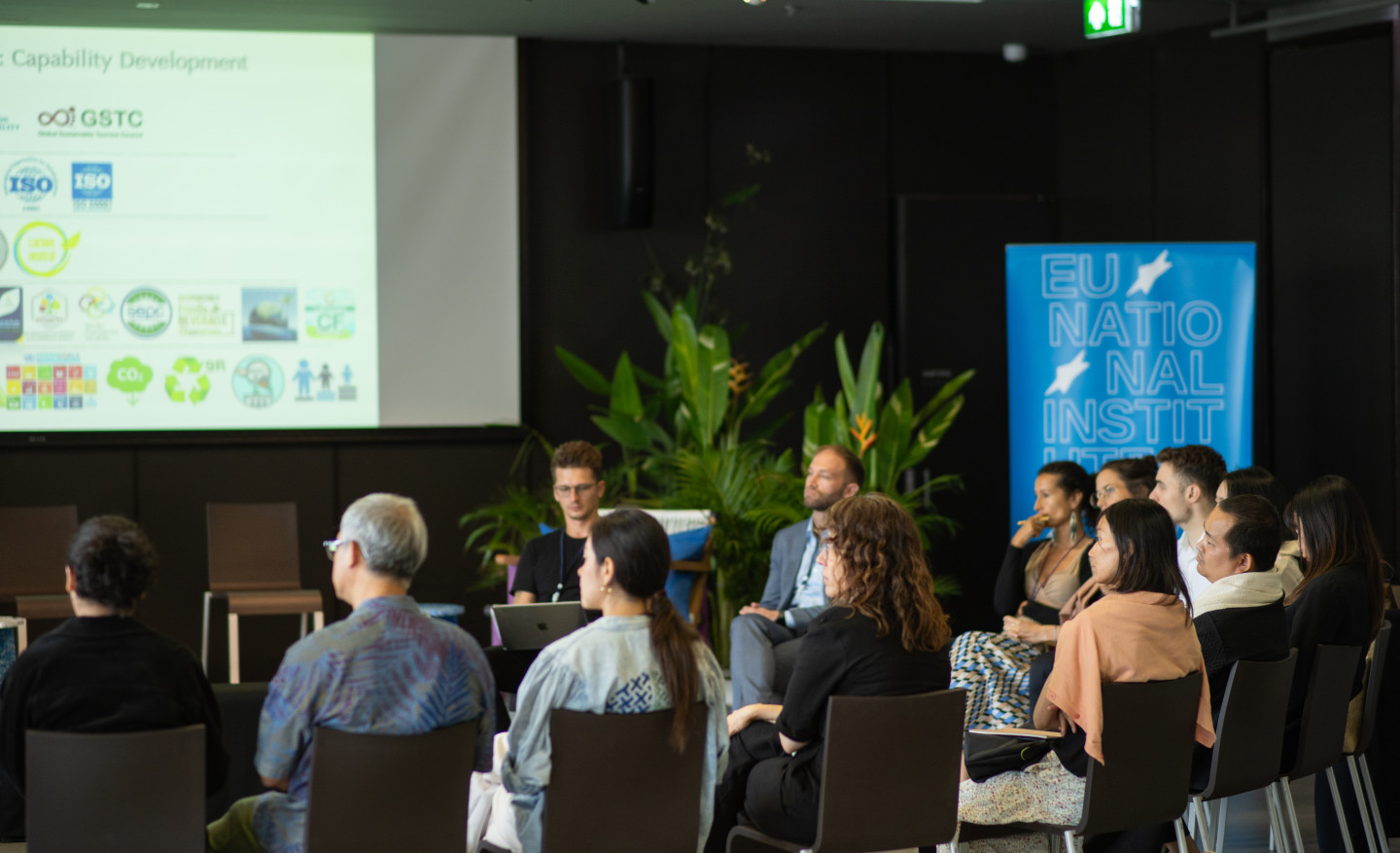Cluster presidency
Each cluster is led by a cluster president, who serves as the main contact person and spokesperson for the cluster. Only representatives of Full Members can be elected to this role.
The presidency is a personal appointment rather than an institutional one, and the president is expected to represent the interests of the entire cluster - not just those of their own organisation.
Forming a presidency team with representatives from different member organisations can help you draw on a broader range of institutional knowledge, international affiliations and resources.
The role of the president
-
Leadership and coordination – Convening regular meetings and ensuring that minutes are recorded and shared with all cluster members. While you are responsible for bringing members together, hosting duties can be rotated among members.
-
Strategic direction and continuity – Defining one or two priorities for your presidency. This could involve pursuing new funding opportunities, launching new initiatives, recruiting new members, or updating the cluster strategy. Maintain original versions of key cluster documents and ensure they are passed on to your successor(s) as part of the cluster’s institutional memory.
-
Representation on the ground – Acting as the main point of contact for external stakeholders, local partners, and EU actors. Your contact details will appear on the EUNIC cluster map.
-
Link with the wider EUNIC network – Serving as the primary contact between the cluster and the EUNIC office. We’ll send important updates to you, with the expectation that you share them with all cluster members. We also welcome regular updates from you on behalf of the cluster. Please remember to notify us of any changes in leadership to ensure our records stay up to date.
different presidency models
Clusters have adopted different leadership models depending on their size, context, and capacities.
Most common cluster presidency models. Establish a presidency model that best suits the needs of your cluster - here some examples:
-
Single cluster president - only one representative acting as the cluster lead. This tends to be a go-to option for smaller clusters with a small membership.
-
Cluster president and vice-president(s) - depending on the needs and size of the cluster, one or two vice-presidents can form a presidency team to support the work of the president. The vice-president is nominated at the same time as the president - this creates continuity and allows you to better prepare for role of president.
Did you know that EUNIC General Assembly is also chaired by a president and a vice-president that are elected every year? -
Co-presidency - increasingly clusters have adopted a co-presidency model with two members lead together. This is a model which is particularly popular amongst members with diplomatic missions that have limited human resources or within clusters that have a large membership.
-
Trio presidency - clusters with a membership of over +25 members have opted for this model with three colleagues leading the cluster together. Watch the video from EUNIC London to hear how it works in practice.
why take on the presidency?
The role of cluster president is a great responsibility, but also a great opportunity. It offers the chance to:
- Engage more deeply with other European partners
- Develop strategic leadership skills in a multicultural environment
- Help shape programmes that have a lasting impact
- Strengthen advocacy and visibility for cultural cooperation with a range of stakeholders
- Build new contacts and partnerships with local and international organisations

Cluster presidency checklist
If you're leading a cluster, these tips can help keep you focused, collaborative and on track for success.
☑️ Set the tone and frequency - communicate clearly and meet regularly with members
☑️ Be realistic and strategic - better to do fewer things well
☑️ No need to do it alone - involve other members and share responsibilities
☑️ Focus on building trust and shared ownership
☑️ Embrace the local context - adapt EUNIC's goals for your local reality
☑️ Reach out to members - get to know them and start or renew relationships
☑️ Adapt the presidency - find a model that suits your cluster’s needs
☑️ Plan your succession and legacy - plan ahead with a long term vision
☑️ Have fun with fellow cluster colleagues!

Elections, succession and presidency handover
Cluster presidents or presidency teams are generally elected for a period of one year. After this term, either new elections are held, or the vice-president steps into the role of president and a new vice-president is elected. Clusters can choose the timing that works best for them—many hold elections either at the start of the calendar year or the beginning of the school year. Each cluster is free to define its own voting process.
Plan the succession of your presidency in advance and involve the new president early to ensure a smooth transition. Ensure a smooth handover process by checking our checklist to make sure you haven't missed anything.
Don't forget to let us know when a new colleague takes over the presidency so that we can update our database and the network map.
New cluster presidents will receive a welcome letter and information pack from us. We organise onboarding webinars for new cluster leaders regularly throughout the year. This is an opportunity to connect with us and ask any questions, as well as meet colleagues from other clusters who are on the same journey.

